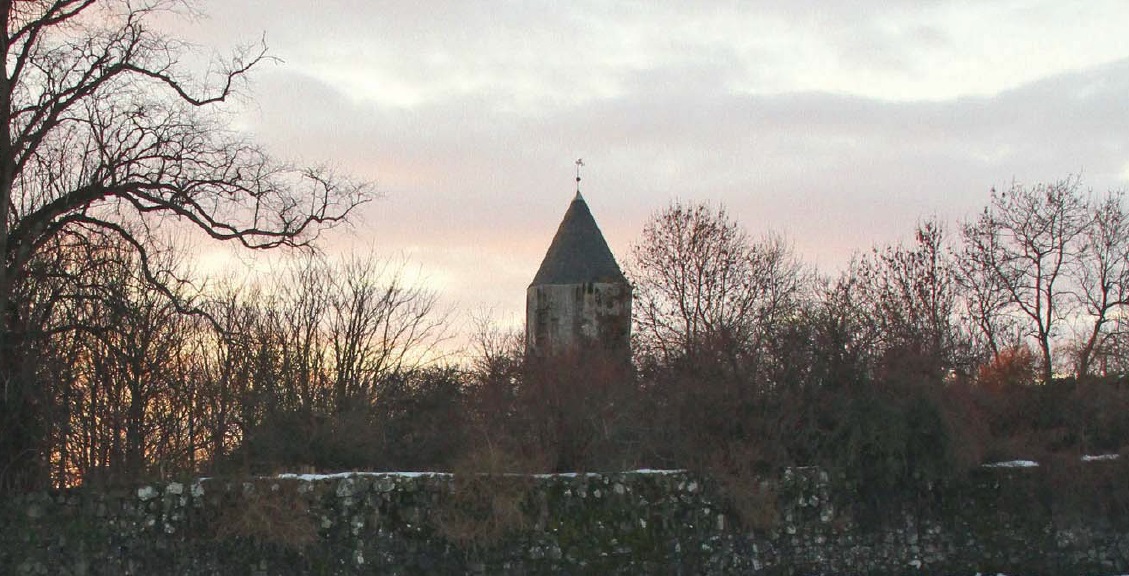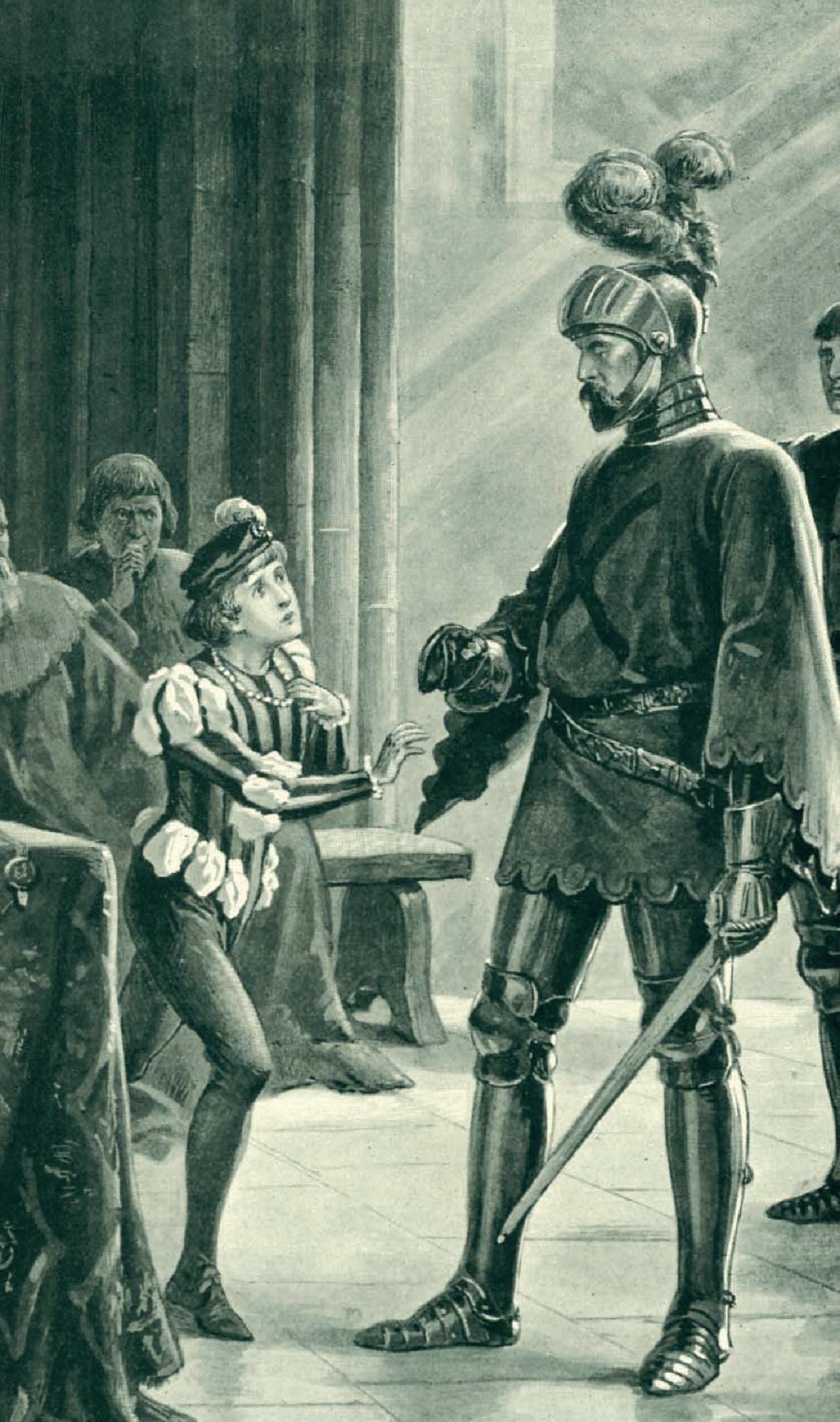
The forgotten Scottish answer to Lord Nelson
Why is Fifer Sir Andrew Wood, the first Admiral of Scotland’s navy and a fearless figure whose naval prowess kept the nation safe from English raiders, a half-forgotten hero?
Just past the Mercury Motorsports garage on the way to Lower Largo in Fife, look left.
Up on the brow of the hill, like a sentinel looking out over the sea, stands the shell of a majestic 1750s home called Largo House.
Nestled behind this visible shell, overtaken by encroaching undergrowth and barbed wire, is a dilapidated round tower, the last remains of Sir Andrew Wood’s castle, built around 1490 by English prisoners captured in battle.
It was to this spot above the Firth of Forth, with views across Largo Bay to the Bass Rock, that Admiral Andrew Wood – ‘Scotland’s Nelson’ – retired once he could be of no more service to the Scottish nation.
From this location he could survey the waters where he commanded his ships, The Yellow Caravel and The Flower, in which he earned his reputation as not only a successful merchant and entrepreneur, but as a pirate slayer and naval genius.
It was in the waters below Largo House that he commanded the biggest ship of its time, The Great Michael. It was in this estuary that he fought his own Bannockburn, sending the English fleet homeward to think again after a battle that raged for two days. After this clash, he retired to this castle, and order his captured English prisoners to build a canal so they could row his battle-broken body to church on Sundays.
This is surely a hero worthy of a Hollywood movie.
It was in the shadow of the kirk in Largo, next to the castle in which he would live out his later life, that Andrew Wood was born in a thatched cottage in the middle of the 15th century. From these humble beginnings, he left the village to learn his trade as a merchant in the Port of Leith. Plying his trade in boats owned by others, Wood had bigger plans.

Wood’s tower still stands
in Largo in the East Neuk
At the time, the great fashion was for ivory carvings so Wood decided to satisfy this demand not with highly expensive elephant ivory, but with ivory from walrus tusks; a little bit like selling Prosecco as Champagne. He sailed to Greenland, where Icelanders discarded walrus tusks as they hunted for meat, loading hundreds of tusks into his ships and taking them to be sold at a huge profit in the German port of Lubeck.
Nigel Tranter, the prolific Scottish historical novelist, made Admiral Wood the subject of his final novel The Admiral, but then Wood had all the man-of-action qualities that draw writers like bees to honey. Wood honed his pirate slaying skills protecting his precious cargo from the English, French and Portuguese privateers lurking behind the islands in the Forth.
When these pirates got too close to fire canons, Wood would personally lead his men in hand-tohand combat, swinging heavy chains around his head as he engaged the enemy. From the proceeds of his trade, he built his own ship, based on the cutting edge design of a Portuguese caravel, and named it The Yellow Caravel.
Wood was also a masterful politician, inviting James III to launch The Yellow Caravel from the Port of Leith. The King appreciated the need for Scotland to be strong on the seas and saw Wood as the man for the job. His two 300-ton merchant ships were put into the service of the nation and were to the fore in the Anglo-Scottish war of 1480-82. As a result, in 1482, James III knighted him the Baron of Largo and made him Admiral of the Scottish navy.
The late 15th century was a turbulent time for Scottish nationhood, with perfidious lords constantly plotting against the king; but Wood remained so loyal that he was described in The Biographical Dictionary of the Eminent Men of Fife as ‘famed in the history of this country no less for his faithful adherence to his sovereign when abandoned by his nobles, than for his courage and naval skills.’
During the uprising of 1488, James III was killed at the Battle of Sauchieburn. Whether, as rumoured, he was whisked away from the battlefield and murdered by the rebellious nobles or simply killed in combat, in the fog of battle nobody was sure where the King was. The nobles suspected Wood of harbouring the King, and sent for him. In the presence of the Lords and the future James IV, who had taken up arms against his father at Sauchieburn, Wood answered that James III was not on board his ships: ‘But would to God he were there safely, and I should defend and keep him from the traitors who murdered him. I hope to see the day when they are hanged for their evil deeds.’
Like his father, the young James IV recognised the need for Scotland to have a strong naval force, and commissioned Wood to build The Great Michael. The greatest ship of its time, this enormous ship was 250 feet from stem to stern and was armed with 300 guns. It was said that ‘all the carpenters in Scotland worked upon her for a year and a day’, and that every oak in Fife and every tree on Wood’s extensive lands was cut down to build the leviathan.

Sir Andrew Wood with the young King James IV
In those days, English ships made frequent incursions into the Forth, but Wood gave the English such a thrashing, capturing five English ships in one battle off Dunbar, that Henry IV couldn’t take this dent to English pride any longer and put a price of one thousand pounds on Sir Andrew Wood to be captured alive and brought back to England. So in 1488 three ships under the command of Sir Stephen Bull sailed into the Forth in an attempt to surprise and intercept Wood on a return trip from Holland.
This was Wood’s Bannockburn. Fought within sight of the huge crowds lining the shores of Largo Bay and Fifeness, Wood in The Yellow Caravel and Captain Mathieson in The Flower took on the three bigger English ships. The battle raged on through the long summer daylight hours, and then again the next morning, ending with the Scots claiming victory near the mouth of the Tay. Instead of Wood being taken prisoner by the English and presented to King Henry, he took Bull prisoner and presented him to King James, who sent him and his men back to England.
Or at least some of them. Other English prisoners of war were put to work. Between Andrew Wood’s castle and the old kirk in Largo, one can still see the remains of an old canal. Too lame now from battle injuries, Sir Andrew could no longer walk to church, so he had his captured Englishmen dig a 200-yard canal so that they could row him to church each Sunday.
The indentured English labour also built the wall around the kirk which still stands today. He even hired the services of a German engineer to explore the possibility of building a series of locks so that he could reach the harbour.
Fife Council is now taking a belated interest in Wood’s Largo lands, with its archaelogical unit recently trying to investigate to confirm what, if anything, remains of the canal. His legacy was broken up when the tower – which was restored to something close to its original condition by the East Neuk Preservation Society in the early 80‘s – was sold by its owners in the early 90’s, along with the title of Baron of Largo, to a colonial judge of Scottish origins, passing onto his son at his death in 2008.
There is one place, however, where Andrew Wood’s memory lives on: in the Great Hall in Edinburgh Castle, where he is honoured with the Wood crest on the ornate stained glass window bearing the inscription ‘tutus in undis’ – ‘safe on the waves’.
TAGS

